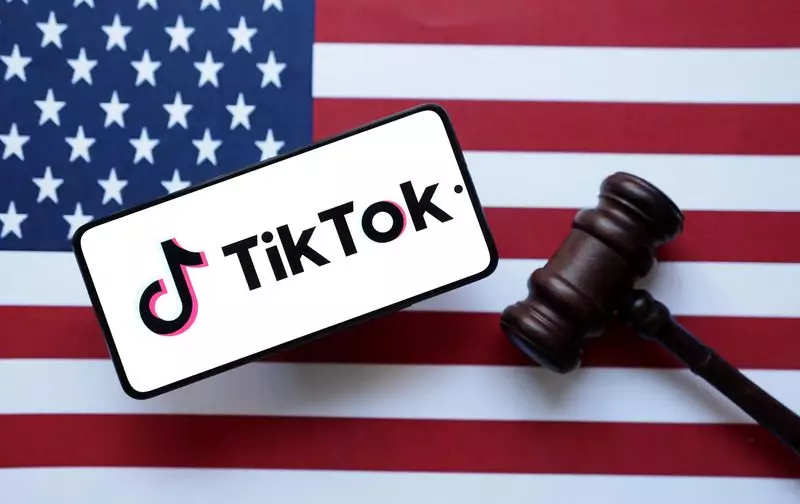In an unprecedented move, TikTok is facing a ban that affects a staggering 170 million users across the United States. This decision follows a ruling from the U.S. Supreme Court that rejected TikTok’s attempts to circumvent a legislative mandate focused on national security. With the impending shutdown looming on January 19, 2024, there are numerous dimensions to this situation that warrant a comprehensive exploration.
The genesis of this ban is rooted in growing concerns about cybersecurity risks posed by foreign applications, specifically those owned by companies like ByteDance, TikTok’s parent organization. The legislation that prompted this drastic measure emerged from fears that user data could be accessed by the Chinese government, compelling U.S. lawmakers to act. This scenario raises questions about the balance between national security and the liberties of digital consumers. It highlights a critical intersection where technology, politics, and public surveillance converge, driving home the point that personal data may never be wholly safe in a global digital economy.
President-elect Donald Trump’s assertion that he would seek a “political resolution” underscores the instability inherent in current U.S.-China relations. It also suggests that political expediency could take precedence over legalities when it comes to such significant acts. As political leadership transitions, the future of TikTok hangs in the balance, creating an environment rife with uncertainty for millions of American users.
User Experience: TikTok’s Sudden Disappearance
For TikTok users, the ramifications are immediate and severe. New downloads have been prohibited, and those already using the application cannot update it, essentially locking them out of new features or improvements. The U.S. user base is unique in its engagement, characterized by a vibrant community of content creators who have leveraged the platform for entrepreneurship. This abrupt disintegration of their primary platform has forced creators to pivot toward alternative outlets such as Instagram and YouTube, compelling immediate adaptations in their content strategies.
Adding to the chaos, users attempting to access TikTok via Virtual Private Networks (VPNs) have reported failures, indicating a well-coordinated effort to shut the app down at multiple levels. The emergence of competing platforms like RedNote could signal a shifting landscape where American users might migrate away from TikTok, opting for alternatives amidst geopolitical tensions.
The Advertising Landscape: Uncertainty Breeds Instability
The advertising industry has also felt the tremors of this potential shutdown. Advertisers have scrambled to draft contingency plans, acutely aware that losing access to TikTok could threaten approximately $11 billion in annual ad revenue. The urgent nature of this situation signals a “hair on fire” moment for marketers. Companies must adapt rapidly, recalibrating their strategies to mitigate losses while simultaneously exploring which platforms stand to benefit from TikTok’s demise.
Organizations like Meta and Snap are under scrutiny as analysts predict shifts in ad spend toward these incumbents. The fallout provides a case study in how brands must navigate rapidly changing consumer landscapes while keeping an eye on competitors, all while attempting to assert their own relevance in a tumultuous market.
The looming ban on TikTok has broader implications for U.S.-China relations. Analysts suggest that this politically charged environment may exacerbate already tense trade relationships. Import restrictions, export curbs on advanced technology, and previous discussions surrounding tech bans have laid the groundwork for this digital confrontation.
While some experts speculate that President Trump could leverage this situation to renegotiate terms with Beijing, it remains to be seen whether such a strategy would yield beneficial results or further paint a target on the backs of U.S. technology firms. The potential for tit-for-tat is an ongoing concern, as other companies could find themselves in similar predicaments amid rising nationalism in digital governance.
The Future: A Possible Path Forward for TikTok?
Despite the challenges, TikTok’s leadership has stated their commitment to its U.S. workforce, indicating a continued investment in their operations. However, with claims from influential figures like billionaire Frank McCourt and potential discussions around a sale to high-profile personalities like Elon Musk floating in financial circles, the future of TikTok may hinge on new ownership dynamics.
As the clock ticks down to the deadline, the evolving narrative of TikTok will serve as a litmus test for digital governance, user agency, and international economic relations. The impending ban sets a precedent that could reshape how businesses engage with consumers in a global digital age, making it crucial for stakeholders to adapt and respond in real-time.
This geopolitical saga encapsulates the intricacies of modern digital interaction, prompting citizens, lawmakers, and corporations alike to grapple with the profound implications of data security and technological sovereignty. In this digital era, the question remains: what price are we willing to pay for connectivity and convenience?

